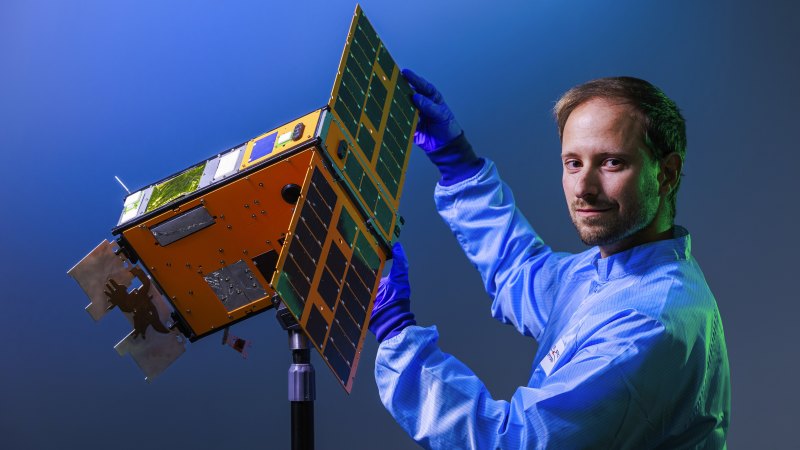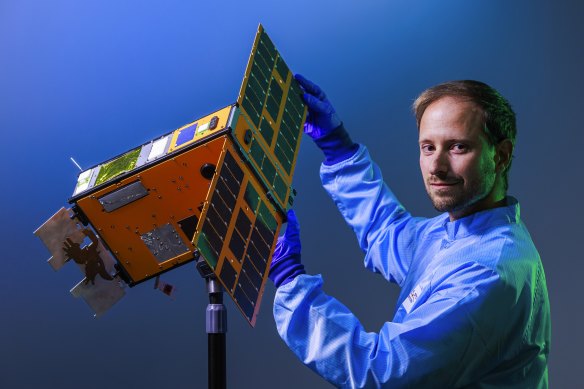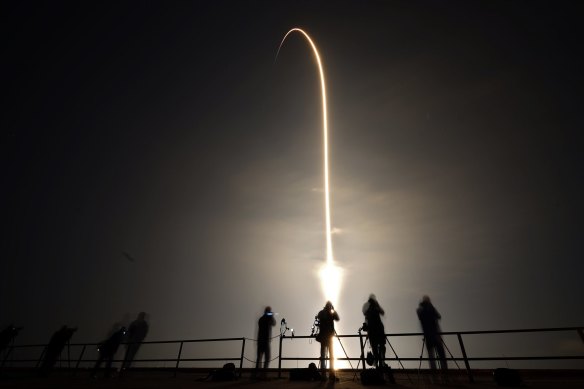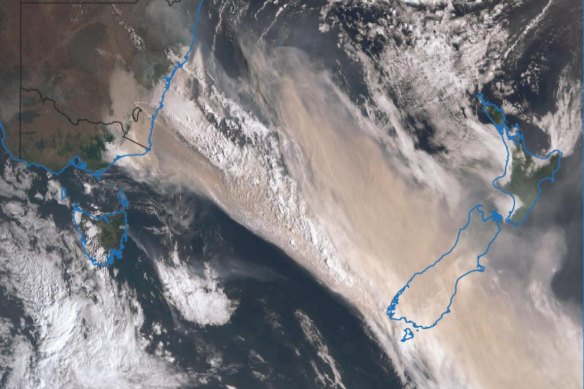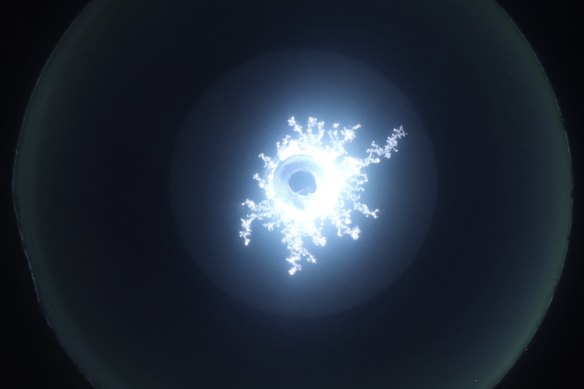Save articles for later
Add articles to your saved list and come back to them any time.
A satellite about the size and weight of a case of beer, en route from Melbourne to California, will be the first Australian research satellite launched into space since the 58-kilogram Federation satellite blasted past the stratosphere in 2002.
The 11.5-kilogram SpIRIT (Space Industry Responsive Intelligent Thermal) will also be the nation’s first satellite to ferry equipment from a foreign space agency when it is launched on one of Elon Musk’s SpaceX rockets in November.
Melbourne University electronic engineer Miguel Ortiz del Castillo with a scale model of the SpIRIT nano satellite.Credit: Aaron Francis
SpIRIT hosts a gamma ray detector called HERMES from the Italian Space Agency. The device will scour the cosmos for remnants of dead or colliding stars, which temporarily burn brighter than entire galaxies and leave elusive high-energy rays as evidence of their spectacular decay into black holes.
Hosting HERMES is a positive move for the Australian space sector after decades spent piggybacking off internationally owned satellites, experts say.
“All elements of society are becoming more and more dependent upon having access to data from space – think of Google Maps,” said astrophysicist Professor Michele Trenti, who led the University of Melbourne SpIRIT project with $7 million in funding from the Australian Space Agency.
“I think it’s very, very important that Australia develops a strong space program and sovereign capabilities that will limit reliance on using assets by other nations.”
A SpaceX Falcon 9 – the same type that will take SpIRIT to space – launches from Florida in March.Credit: AP
The risks of that reliance were thrown into sharp relief last week when the prospect of a budget shutdown in the US threatened to cut Australia off from US satellite data as fires scorched NSW and Victoria, said satellite data expert Professor Stuart Phinn.
“A budget shutdown also shuts down the [US] agencies that produce and deliver satellite data that are used by a range of Commonwealth and state agencies in Australia,” Phinn, who’s not involved in the SpIRIT program, said.
That includes data streams from NASA and the National Oceanic and Atmospheric Administration (NOAA) used by the Bureau of Meteorology for climate models and weather prediction.
“When we’re predicting storms, rainfall, all the fires in south-east Australia – all of that comes from overseas … we lean on the US too much,” Phinn said.
An example of satellite imagery (here showing smoke from Black Summer fires obscuring New Zealand) Australia sources from foreign-owned satellites, in this case Japan’s Himawari-8.
The government has slashed spending on space since it was elected last year. Labor ditched a plan to fund Australian rocket launch facilities and axed the $1.2 billion National Space Mission for Earth Observation, which would have launched four satellites between 2028 and 2033.
“We are really good at building applications [for satellite data],” Phinn said. “But we’ve really lagged at giving back in terms of actually designing, building and launching satellites.
“SpIRIT’s a good start.”
A plasma thruster from Adelaide company Neumann Space will propel SpIRIT. The blaster works by zapping a rod of metal with a high current. The jolt vaporises a tiny amount of the metal, generates plasma (a charged gas) and causes a jet of electrons to pulse into space, creating thrust.
Plasma sparking from experiments on Neumann’s thruster, captured with a high-speed camera.Credit: Neumann Space
By using solid metal as fuel, the technology voids the need to take explosive and sometimes toxic propellant gas to space, and Neumann is working on hardware that will allow spacecraft to grab floating debris from orbit and repurpose the space junk into the thruster’s metal fuel.
The nanosatellite also contains a thermal control system developed by the University of Melbourne that dissipates heat into space to prevent instrument meltdown and a “bus” or main structure made by another Adelaide company, Inovor.
Despite recent funding cuts to the space industry, head of the Australian Space Agency Enrico Palermo said the January launch of five Canberra-built aircraft traffic management satellites from Skykraft and AquaWatch, a CSIRO plan to monitor water from space, were examples of Australian satellite capability picking up steam.
“We’ve got various universities on the verge of launching new satellites with some pretty unique payloads. We’re starting to build more sophisticated satellites, and that’ll give us opportunities to have some more sovereign capability.”
He said during its two-year orbit, SpIRIT would gain valuable space heritage, proving the Australian satellite technology can withstand the harsh conditions of space.
“Once you can demonstrate your technologies in space, it really advances your technology readiness level which means you then have a more marketable product.”
The Examine newsletter explains and analyses science with a rigorous focus on the evidence. Sign up to get it each week.
Most Viewed in National
From our partners
Source: Read Full Article
